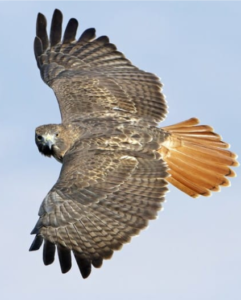
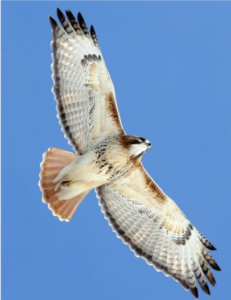
- Appearance: brown back, broad wings, white belly with rust-colored streak on top of wings and dark brown/black
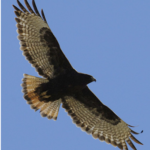 streakings, wide red tail: bright from above but pale from below
streakings, wide red tail: bright from above but pale from below
- Females have the same coloration as males, but are larger
- There are 16 subspecies of red-tailed hawk, the one common to Long Island is the Eastern Red-Tailed Hawk
- In the Western United States, adults may be darker and/or have darker streakings – they are known as Harlan’s morphs
- The red-tailed hawk has the strongest cry of any raptor, so in movies worldwide it is used for the sound of any eagle or hawk
https://www.allaboutbirds.org/guide/Red-tailed_Hawk/sounds
https://www.allaboutbirds.org/guide/Bald_Eagle/sounds
- Length:18-26 inches (about 1.5-2 feet)
- Wingspan:45-52 inches (about 4 feet)
- Status:common, populations increasing
- Recovered from DDT sprayings that endangered many raptor species in the mid-1900s
- Habitat
- Inhabit almost any area with open land
- Meadow, fields and pastures, deserts, scrublands, grasslands, plains, mountains, roadsides, parks, broken woodland, and tropical rainforest
- One of the most common and most widely distributed hawk in the United States
- Lives in the United States, much of Mexico, Caribbean, Central America year-round, Canada but only during breeding season
- Diet
- Most of diet is small mammals, voles, mice, woodrats, rabbits, snowshoe hares, jackrabbits, and ground
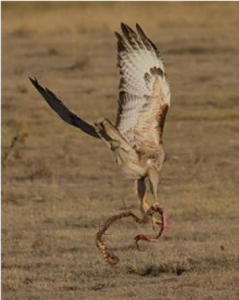 squirrels, may also eat birds, reptiles, carrion
squirrels, may also eat birds, reptiles, carrion - To hunt rattlesnakes, land near snake and flutter wings, when snakes go to strike wings, they are grabbed around the middle of their bodies before receiving a bite to the head
- Sit on perch and wait for prey to walk out in the open
- When prey is in range, soar down with wings in V-shape
- Swoop down by tucking wings in, grab prey with sharp talons, snatch birds mid flight
- Prey can be anywhere from a few ounces to over 5 pounds
- It is rare for a red-tailed hawk to eat dogs, cats, or other larger mammals
- Sometimes hunt in pairs – mates have been seen guarding opposite sides of a tree to catch squirrels
- Most of diet is small mammals, voles, mice, woodrats, rabbits, snowshoe hares, jackrabbits, and ground
- Migration
- Most red-tailed hawk populations do not migrate
- Only populations that breed in cold, snowy climates migrate (i.e. Canada) down to more southerly locations (Mexico, Central America, Caribbean Isles, etc.)
- Red-tailed hawks fly at around 20-40 mph horizontally, but when diving can exceed 120 mph
- Usually migrate alone, sometimes forms small flocks
- Nesting
- When courting a mate, male red-tailed hawks swoop up and down at steep angles, then grabs female’s talons and they both enter twisting dive, breaking off only when they are close to the ground
- Red-tailed hawks mate for life, but will find a new mate if their partner dies
- Nests above ground in tree, nesting post, building, etc. – can be up to 120 feet off ground
- Mating pairs return to the same nest each year
- Average brood is 2-3 white-light brown eggs speckled with brown or purple
- During first few weeks, male hunts while female guards nest and feeds chicks
- When chicks are large enough to feed/defend themselves, both parents hunt
- Red-tailed hawks are extremely territorial, soar around nest to deter intruders, known to chase other hawks, eagles, owls
- May dive at humans who get too close to the nest
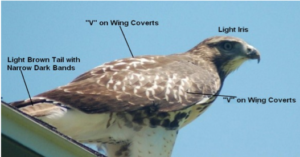
- May dive at humans who get too close to the nest
- Fledglings learn to fly after about 6-7 weeks, but stay near parents for a few more weeks while they learn to hunt
- The iconic red tail of this hawk does not show until young are about 1 year old
- Red-tailed hawks normally start breeding when they are 3 years old
- Average lifespan is 15-20 years, but the oldest red-tailed hawk was over 30 years old






